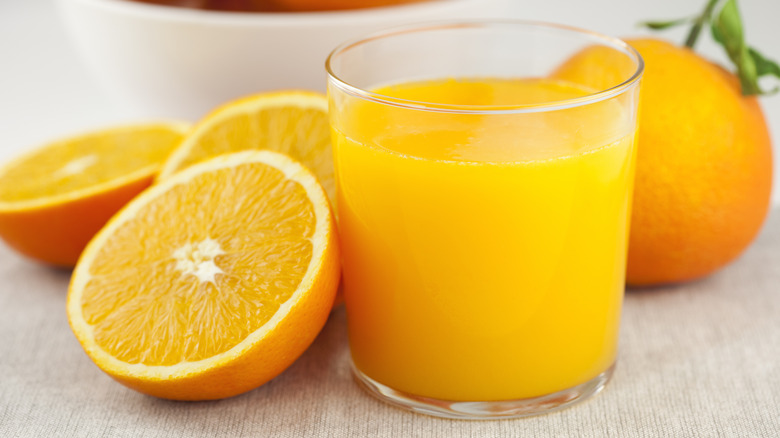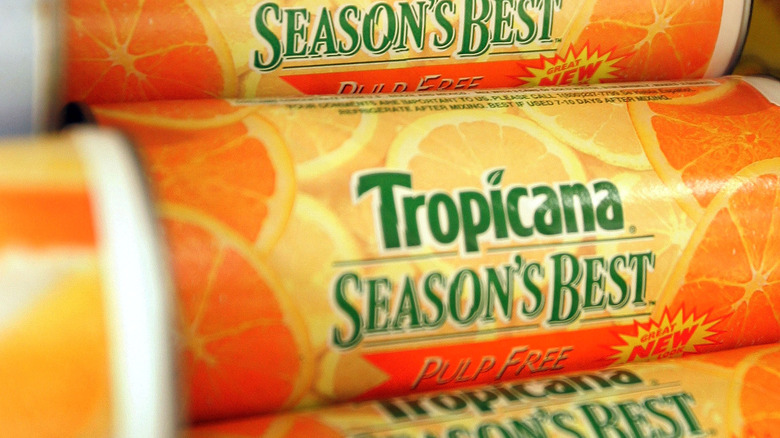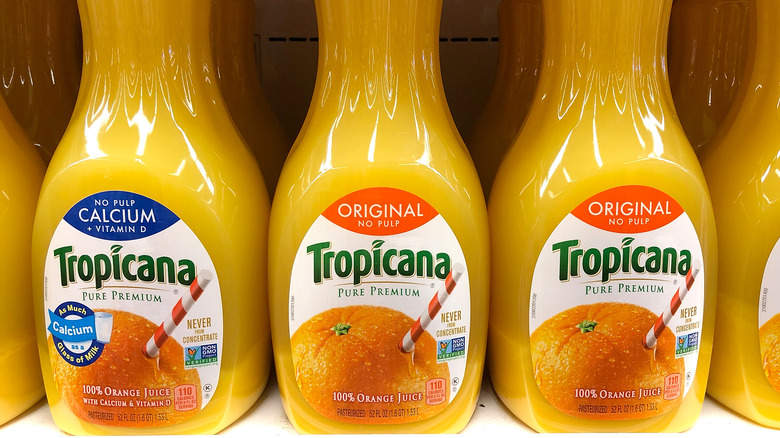Canned Juice Used To Be The Only Way To Enjoy Citrus-Based Beverages
There's nothing like a tall glass of orange juice with breakfast or a frosty cup of lemonade after some time outside in the heat. You can find these beverages in your local grocery store's refrigerated section, usually in cartons or plastic bottles advertising pulp content and whether or not the drink is "all-natural." But 100 years ago, back in the 1920s, cartons were nowhere to be found. Instead, citrus juices were stored in cans that did not need to be refrigerated.
Where did these canned juices go over time? As concentrated products became more popular in the 1940s and 1950s, the production of canned juices began to drop considerably. Concentrates were growing in popularity, and these needed to be stored in freezers. Still, the shelf-stable cans continued to live on until the '60s and '70s, when they dipped to just about 6% of the citrus juice market share in the country.
Nowadays, you'll still see frozen cans of concentrate in the freezer section, but canned juice on shelves is (mostly) a thing of the past in the United States.
The concentrate takeover
What prompted the nationwide switch from canned juice to frozen concentrate? World War II and the need to keep soldiers nourished with Vitamin C inspired the U.S. Army to seek a way to ensure orange juice would keep longer. While frozen OJ had existed up to this point, the frozen fresh juice would turn bad quickly, changing color and flavor as the orange's natural oils turned rancid.
In 1945, the USDA discovered a way to slow this process by concentrating the juice. The organization evaporated the watery part and then froze the result. This not only revolutionized the way juice could be delivered to troops, but it also changed how it could be delivered and stored in the grocery store for the public's consumption. Though the war was over before soldiers could get their hands on frozen orange juice concentrate, that process eventually became the standard for packaging citrus beverages into the 1950s and 1960s.
This canned concentrate was popularized by the Vacuum Foods Corporation, a company that would eventually come to be known as Minute Maid.
Storing today's citrus beverages
Though concentrate reigned supreme for years, in the '80s, consumers began to gravitate towards a new juice product: the "not-from-concentrate" (or NFC) juice. Health-conscious people began to drink this, believing it to be better for you than concentrate. However, to keep these juices stable for grocery store refrigeration, they went through a medley of processes, from flash-pasteurization to de-oiling. Artificial flavors had to be re-added into these juices to ensure they still tasted like the fruits they were made from by the end of it all.
Moving into the 2000s, though, all-natural juice made a resurgence, and since then, it's been here to stay. Though fresh bottle or carton juice is certainly not shelf-stable like the original canned juices, nor does it last as long as frozen concentrate, it takes the cake in terms of freshness, flavor, and nutrition. Just be sure to drink it quickly, as juice can go bad in as little as 7 to 10 days.


